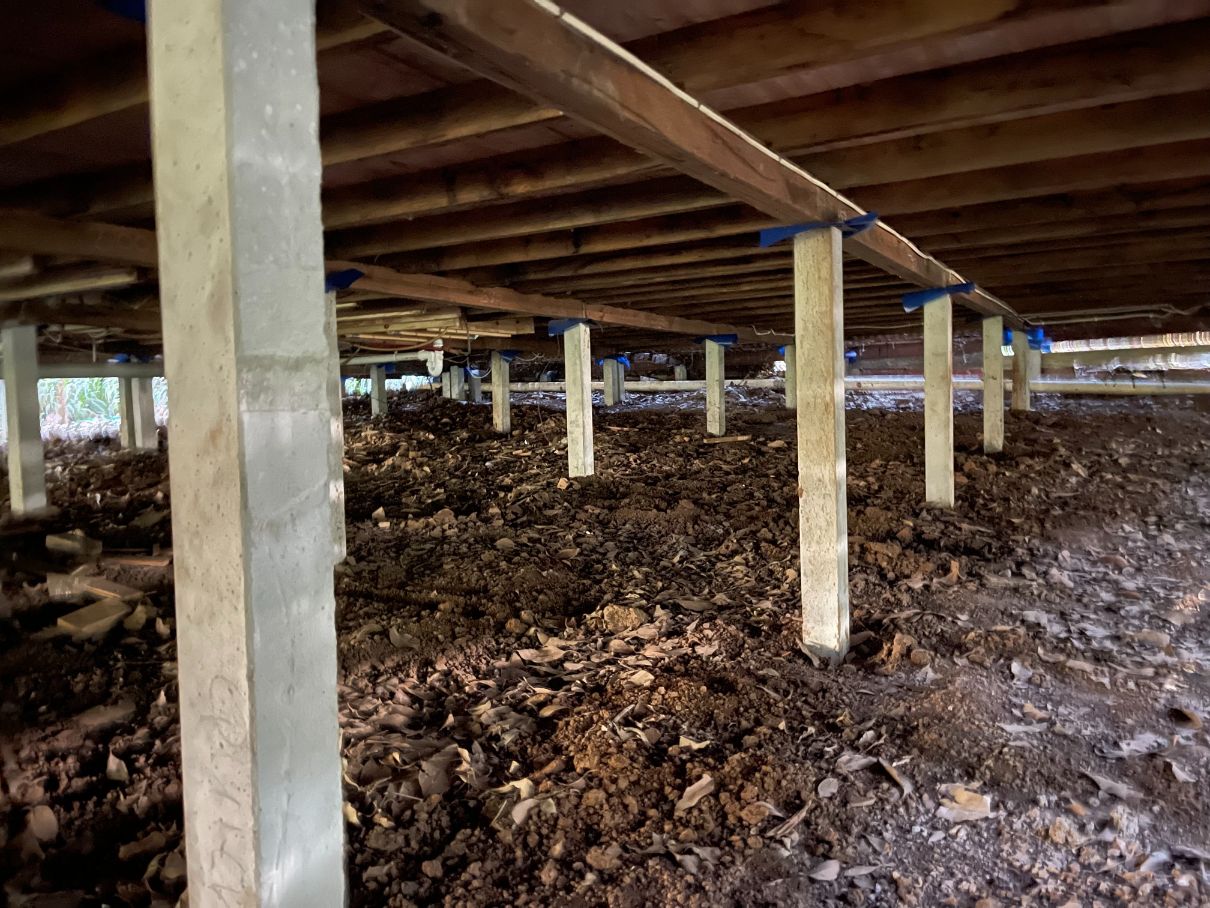The difference between restumping and underpinning is restumping is a foundation repair process used for houses that are built on stumps. Whereas, underpinning is used for houses built on a slab or strip footing.
Restumping is used to replace damaged stumps with new ones, whereas underpinning is used to stabilize the foundation. They are used on completely different foundation structures. This blog post will discuss their differences and how to recognize them.
What is restumping?
Restumping is a repair process where damaged house stumps are replaced with new stumps. The process is only applicable when the structure is built on stumps. Please note that restumping and reblocking are often used interchangeably, so don’t get confused. You can check our other blog posts to know more.
There are three most commonly used materials for stumps, each with distinct advantages and disadvantages. They are:
Timber
Timber is the most popular sort of restumping, which was commonly used in the late 1960s to 1970s. However, it is also the most prone to termite and moisture damage.
Concrete
Though it’s more expensive than timber, it’s more durable. So, it’s a value-for-money investment.
Steel
Among the three, Steel is considered the most long lasting and, at the same time, the most expensive. We use steel where the stumps are over 1.8m long.
At this point, you may be wondering how long does it take to restump a house. We have got a detailed blog post for this. Check this out.
What is Underpinning?
Underpinning is the process commonly used to stabilisze foundations. It is done by pouring large pads of concrete below a footing, spreading the weight distruction and reinforcing the foundation It can only be done when the building structure is built on a slab or a strip footing.
There are several methods used for underpinning a house. These includes tradtional concrete underpinning, piling, mini-piling, screw piles, jet grouting, and geo-polymer resin injection.
Traditional Concrete Underpinning
The process is done by digging around the foundation and pouring enough concrete mixture to reinforce the foundation.
Piling
Piling is done by driving concrete or steel piles deep into the ground so that they can support the foundation.
Mini-Piling
It’s a combined process of mass concrete and piling. It’s a mini-piling installation process with small diameter piles to reinforce the foundation.
Screw Pile
To do this, a screw-shaped steel pile is driven into the ground until it reaches the required torque.
Jet Grouting
High-pressure water jets are used to dig up the soil to pour concrete that builds a column to reinforce the foundation.
Geo-polymer Resin Injection
A process of injecting geo-polymer resin deep into the ground to lift the footing of a building
Is underpinning the same as Restumping?
No, underpinning and restumping are not the same process of foundation repair. Restumping can only be possible if the house is built on stumps and replaces the deteriorated stumps with new ones. In contrast, underpinning is used when the building is built on a slab or strip footing to stabilise the foundation.
How do I know if my house is built on stumps?
Take a look around your house and check if you notice the following –
– Your house is suspended above ground
– Stumps can be seen that can be made of timber, concrete, or steel to support
– There are vents around the outside of your house
Your house will be built on stumps if the above conditions are met.
If you are still not sure enough, we recommend consulting a local foundation repair contractor to visit your site. They are the best source to suggest what you need to do with your foundation repair and possibly give an estimated cost and time.
How do I know if my house is built on a slab?
If you discover that your property is not elevated off the ground and does not have any stumps supporting it, then it’s likely that it’s built on a slab.
Another tricky way is – to check if you can see ducted floor heating and cooling system. If your home has ducted heating then it must be suspended and therefore not built on a slab.
We hope this blog post has answered all your questions relating to restumping and underpinning. Remember that underpinning is a different process used to stabilize foundations when building structures are built on a slab. Last but not least, always consult a local foundation repair contractor to be safe – for you and your building.

